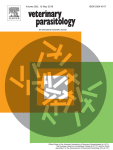Ver ítem
- xmlui.general.dspace_homeCentros e Institutos de InvestigaciónCICVyA. Centro de Investigación en Ciencias Veterinarias y AgronómicasInstituto de PatobiologíaArtículos científicosxmlui.ArtifactBrowser.ItemViewer.trail
- Inicio
- Centros e Institutos de Investigación
- CICVyA. Centro de Investigación en Ciencias Veterinarias y Agronómicas
- Instituto de Patobiología
- Artículos científicos
- Ver ítem
Identification of novel vaccine candidates against cryptosporidiosis of neonatal bovines by reverse vaccinology
Resumen
The apicomplexan protozoan Cryptosporidium parvum is an important causative agent of diarrhea of neonatal bovines. Vaccination has been proposed as an advantageous strategy against cryptosporidiosis of calves since besides protection against disease it has also the potential to prevent dissemination of infective oocysts into the environment. Antigens anchored to the parasite surface via glycosylphosphatidylinositol (GPI) are implicated in host cell
[ver mas...]
The apicomplexan protozoan Cryptosporidium parvum is an important causative agent of diarrhea of neonatal bovines. Vaccination has been proposed as an advantageous strategy against cryptosporidiosis of calves since besides protection against disease it has also the potential to prevent dissemination of infective oocysts into the environment. Antigens anchored to the parasite surface via glycosylphosphatidylinositol (GPI) are implicated in host cell attachment and invasion and represent promising vaccine candidates. A reverse vaccinology approach was employed to (i) identify the GPI-anchored proteome of C. parvum using available web-based bioinformatic tools and (ii) characterize previously unrecognized novel vaccine antigens. Altogether, 14 putative GPI-anchored proteins could be determined of which CpH1 and CpSUB2 as well as GP60 were further characterized. Sequencing and comparison of GP60, CpH1, and CpSUB1 alleles amplified from different geographic isolates showed a high degree of conservation. All three antigens were recombinant expressed and immunoblotted using sera of 12 Cryptosporidium-infected calves sampled at age periods 1–11 and 12–28 days after birth. Specific antibody reactions against the studied antigens were detected in all analyzed calves, demonstrating their immunreactivity and expression, and recognition in vivo at an early stage of host infection. Besides the acknowledged GP60 vaccinogen, the presented reverse vaccinology approach reveals the additional vaccine candidates CpH1 and CpSUB1 for inclusion into a subunit vaccine formulation.
[Cerrar]

Autor
Tomazic, Mariela Luján;
Rodriguez, Anabel Elisa;
Lombardelli Joaquín Andrés;
Poklepovich Caride, Tomás Javier;
Garro, Carlos Javier;
Galarza, Roxana Ivon;
Tiranti, Karina;
Florin-Christensen, Mónica;
Schnittger, Leonhard;
Fuente
Veterinary parasitology 264 : 74-78. (15 December 2018)
Fecha
2018-12
Editorial
Elsevier
ISSN
0304-4017
Formato
pdf
Tipo de documento
artículo
Palabras Claves
Derechos de acceso
Restringido
 Excepto donde se diga explicitamente, este item se publica bajo la siguiente descripción: Creative Commons Attribution-NonCommercial-ShareAlike 2.5 Unported (CC BY-NC-SA 2.5)
Excepto donde se diga explicitamente, este item se publica bajo la siguiente descripción: Creative Commons Attribution-NonCommercial-ShareAlike 2.5 Unported (CC BY-NC-SA 2.5)

